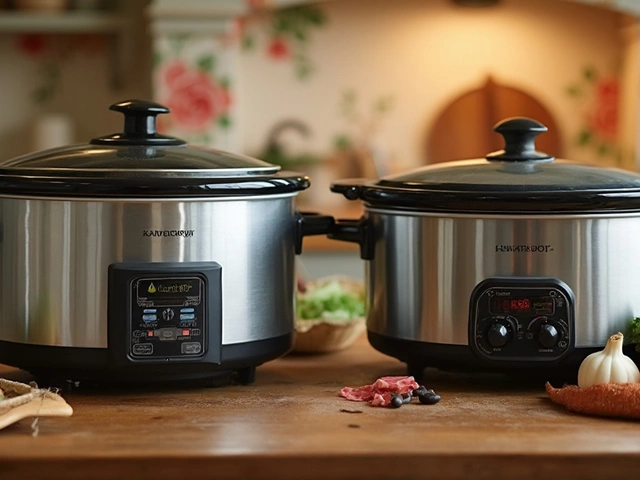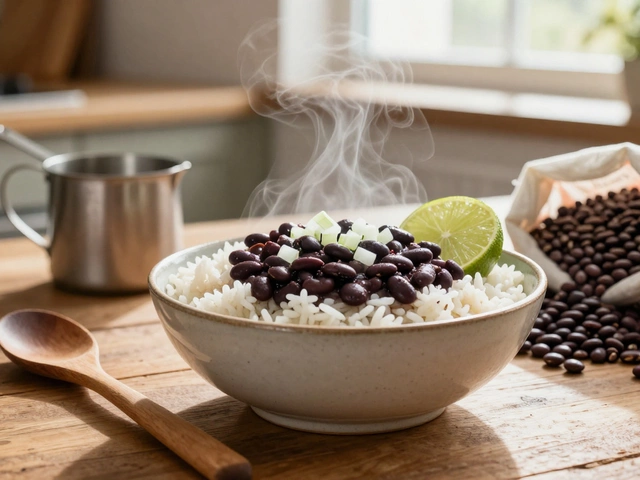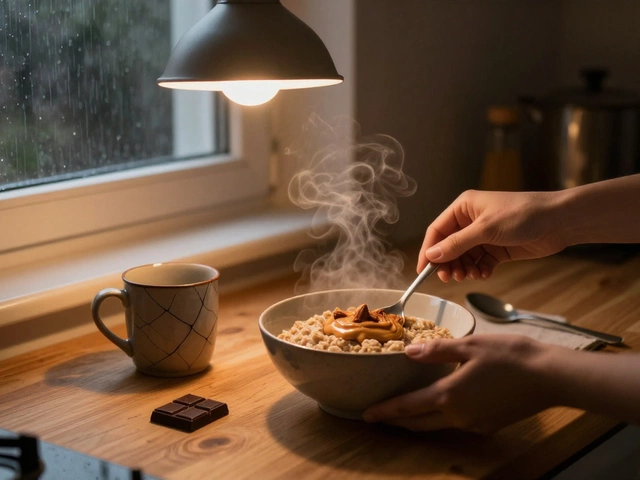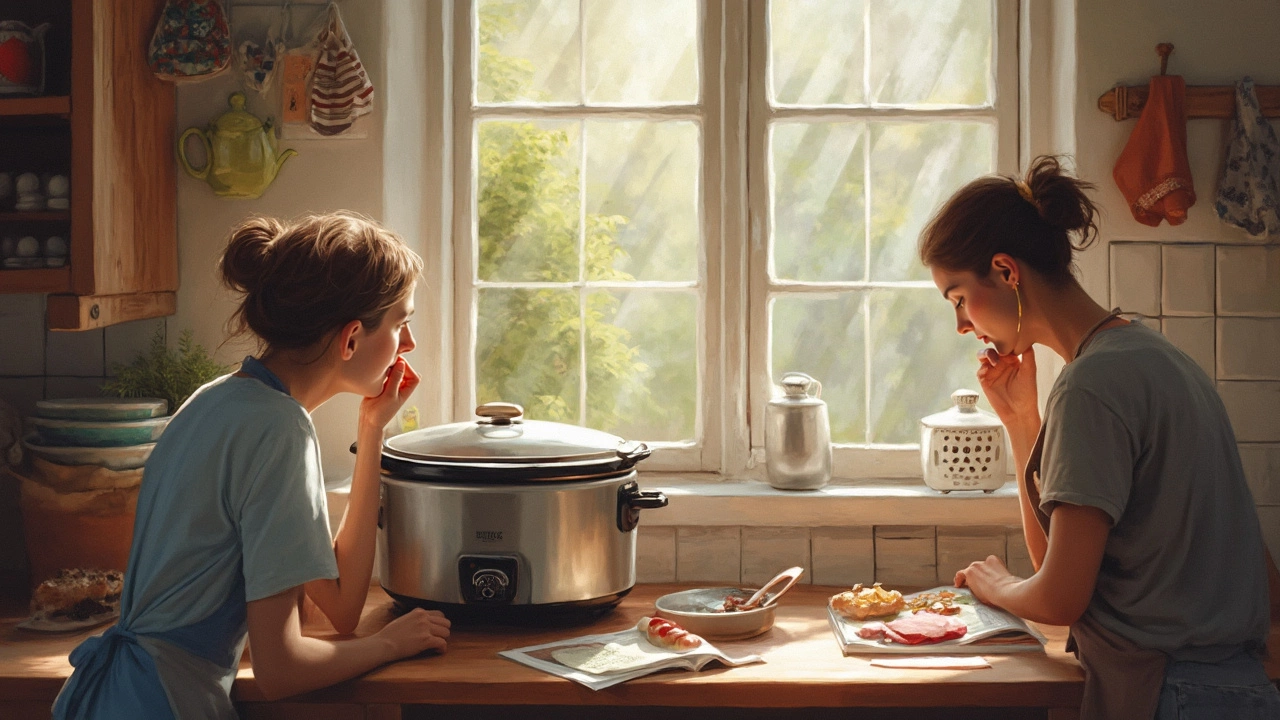
Struggling with soggy slow cooker food? You’re not alone. A lot of folks say that putting a tea towel between the lid and the cooker keeps the condensation out of their dinner. But is it safe, or does it just sound clever?
Before you grab the nearest tea towel, think about what happens in your slow cooker. All that moisture needs to go somewhere. Sure, a tea towel absorbs the steam, but slow cookers aren’t really built for fabric heat-trapping tricks. Covering your slow cooker with anything but its lid means you step out of the manufacturer's safety zone. Most slow cooker manuals specifically warn against blocking the vents or using anything that isn’t made for the appliance. If there’s a fire risk or it overheats, the dinner plans aren’t the only thing that could go up in smoke.
There’s no denying it—nobody likes limp bread topping or watery sauces. That’s probably why the tea towel trick took off online in the first place. But if you want to keep your dinner safe (and your kitchen too), it’s worth looking into what’s going to keep your food delicious without the possible headache. Don’t worry—there are better ways to handle the condensation issue, and they don’t risk starting a fire or voiding your warranty. Let’s dig into what works and what doesn’t so you can keep your slow cooker masterpieces stress-free.
- Why People Use a Tea Towel With Their Slow Cooker
- Is It Actually Safe?
- What Can Go Wrong?
- Better Ways to Handle Too Much Condensation
- Practical Slow Cooker Tips
Why People Use a Tea Towel With Their Slow Cooker
The whole tea towel trick started because some home cooks got fed up with soggy casseroles, breads, and desserts from their slow cooker. When you pop the lid on, steam collects at the top, turns into water, and drips right back down onto your food. The thinking is that a tea towel will soak up that extra moisture so your dish doesn't end up watery or mushy. This is especially common with bakes or when you want a thick sauce.
Here’s what usually happens: you place a clean tea towel over the slow cooker, then put the lid on top. The towel hangs loosely and catches the condensation as it rises, helping to stop it from raining right back onto your meal. Some classic slow cooker bread recipes and sticky toffee pudding methods include this step, hoping for fluffier, drier results. It's also a popular hack all over online cooking forums and social media.
People get the idea because slow cookers work differently than ovens. Ovens let out steam; slow cookers trap it, which means liquid doesn’t really cook off. Throw in too much water and you might just get stew, even when you didn’t want one. A towel sounds like an easy fix, especially when you don’t want to mess around with your recipe’s liquid measurements.
- Best for recipes like bread, cakes, and desserts that need a dry top or crust
- Not as useful for stews or soups that need all their moisture
- Can rescue your lasagna from that dreaded pool of water on top
To give you an idea: in a quick poll on a popular slow cooker recipe group, around 1 in 5 slow cooker fans admit to trying the towel hack at least once, mostly for specific desserts or tricky bakes. But just because folks use it doesn’t always mean it’s safe—or even the best way to fix condensation problems. There’s more to the story, especially when you consider what manufacturers actually recommend.
Is It Actually Safe?
Let’s get straight to it. Using a tea towel under a slow cooker lid isn’t really recommended by any major slow cooker manufacturer. When you put fabric next to a hot appliance, you risk it getting too hot, which could even mean a fire, especially if your slow cooker is working overtime on high for hours.
Another major concern? Most slow cookers are designed with safety features that keep heat where it belongs and moisture dripping safely back into your slow cooker. Toss a towel into the mix and you’re messing with the way it was built to handle steam and pressure. On top of that, any towel left hanging loose on the sides could end up touching the countertop or even the heating element under certain lids—nutty, but it happens. That’s just asking for burned cloth and maybe smoke if you’re unlucky.
Insurance companies and even fire safety services have warned that kitchen fires sometimes start when people try "hacks" like this—good intentions, bad result. Appliance insurance won’t cover accidents if you don’t follow manufacturer safety rules, and slow cooker guides say never to add fabric around the lid for a reason.
| Risk | Likelihood | Impact |
|---|---|---|
| Overheating | High | Can cause appliance failure or fire |
| Fire Hazard | Medium | Potential kitchen fire |
| Warranty Voided | Very high | Manufacturers will not cover damage |
| Blocked Vents | High | Pressure and heat buildup |
If you’re thinking about cutting corners for crispy toppings, it’s just not worth the risk. You have safer options that protect your food and your kitchen. Manufacturers design slow cooker lids to keep enough moisture in and handle the heat safely—towels just aren’t part of the plan.
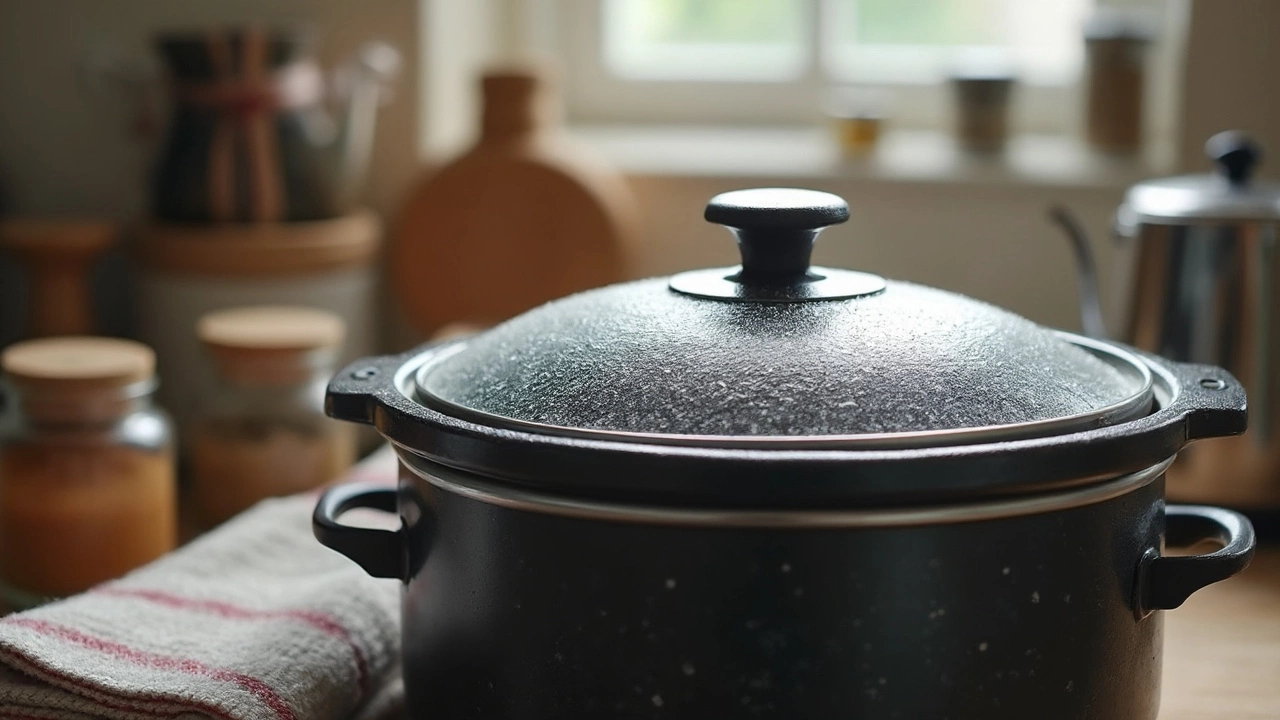
What Can Go Wrong?
Popping a tea towel under your slow cooker lid sounds harmless, but a few real risks come with that trick. Safety always beats soggy dinner. Let’s break down exactly what can go sideways.
- Fire hazard: Slow cookers get hot—really hot. Sitting a fabric tea towel between the lid and the pot is just asking for trouble if it touches the heating element or gets bunched up. There have been reports of scorched towels and even small kitchen fires because the towel blocks the cooker’s steam vent.
- Overheating your slow cooker: Covering the gap with a tea towel messes with the way your cooker cools off. If steam can’t escape the way it’s supposed to, you risk making both your pot and the food inside dangerously hot, possibly tripping its safety shutoff (if yours has one). Some models can actually warp or break if used improperly.
- Voiding your warranty: Most slow cooker manuals are clear—no towels, no foil, basically nothing except their own lid. If something goes wrong while using a towel, you’re likely footing the bill for repairs. That pain isn’t worth a crusty bread top.
- Food safety concerns: If steam can’t get out properly, you can end up trapping way too much heat and moisture. This can sometimes make the food cook unevenly, or in rare cases, keep temperatures out of the safe cooking zone for too long. That’s bad news if you’re cooking meats that need to reach a certain temp to be safe.
Just to really drive the point home, here’s a quick look at known risks from actual slow cooker incidents:
| Issue | Reported Outcomes |
|---|---|
| Tea towel touching hot element | Scorch marks, burning smell, smoke |
| Blocked vent with towel | Overheated unit, safety shutdowns, warranty claims denied |
| Condensation trapped, uneven cooking | Undercooked or overcooked food, food poisoning risk |
The takeaway? Trying to fix a watery meal with a simple tea towel shortcut might cost you a lot more than an extra five minutes thickening your sauce at the end. There are easier, safer fixes—don’t risk your slow cooker or your kitchen just to dodge a little condensation.
Better Ways to Handle Too Much Condensation
Too much liquid sloshing around in your slow cooker isn’t fun. Luckily, you don’t need to mess with a tea towel to get great results. Simple tweaks work better and keep your slow cooker working safely.
First off, try reducing the liquid in your recipe from the start. Most slow cooker meals don’t need as much water or broth as typical stovetop recipes, since the steam isn’t escaping anywhere. Cutting the liquid by even 25% can make a big difference.
- Leave the lid on: Lifting the lid to peek adds extra cook time and dumps the temp. But for sauces that turn runny, take the lid off during the last 30-45 minutes of cooking. This lets some steam escape and thickens up your meal.
- Thicken with cornstarch: Mix a little cornstarch or flour with cold water, then stir it into your dish toward the end. Instant fix for soupy dinners, and you don’t need any extra gadgets or weird tricks.
- Use a slow cooker liner: Liners help with cleanup, but they won’t soak up steam. The real benefit? Liners trap leaks and spills so your kitchen stays clean, not your meal thick.
- Add thick veggies: Potatoes, carrots, and other root veggies soak up liquid over time. They double as flavor boosters and natural thickeners.
- Switch to high heat at the end: If your sauce is still too watery, crank up the heat for the last half hour. You’ll boil off extra liquid without burning the food.
Here’s a quick peek at how different lid strategies compare in common slow cooker issues:
| Method | Effect on Condensation | Safety |
|---|---|---|
| Tea Towel Trick | Reduces, but risks fire | Not recommended |
| Leave Lid Slightly Open | Steam escapes, food thickens | Safer, but may lower temp |
| Remove Lid Before End | Evaporates excess liquid | Safe if monitored |
Don’t forget—every slow cooker cooks a little bit differently. If yours leaves puddles, keep a kitchen notebook and jot down what actually works in your kitchen. Soon, you’ll have the perfect tweaks for your own slow cooker recipes, no soggy tea towels required.
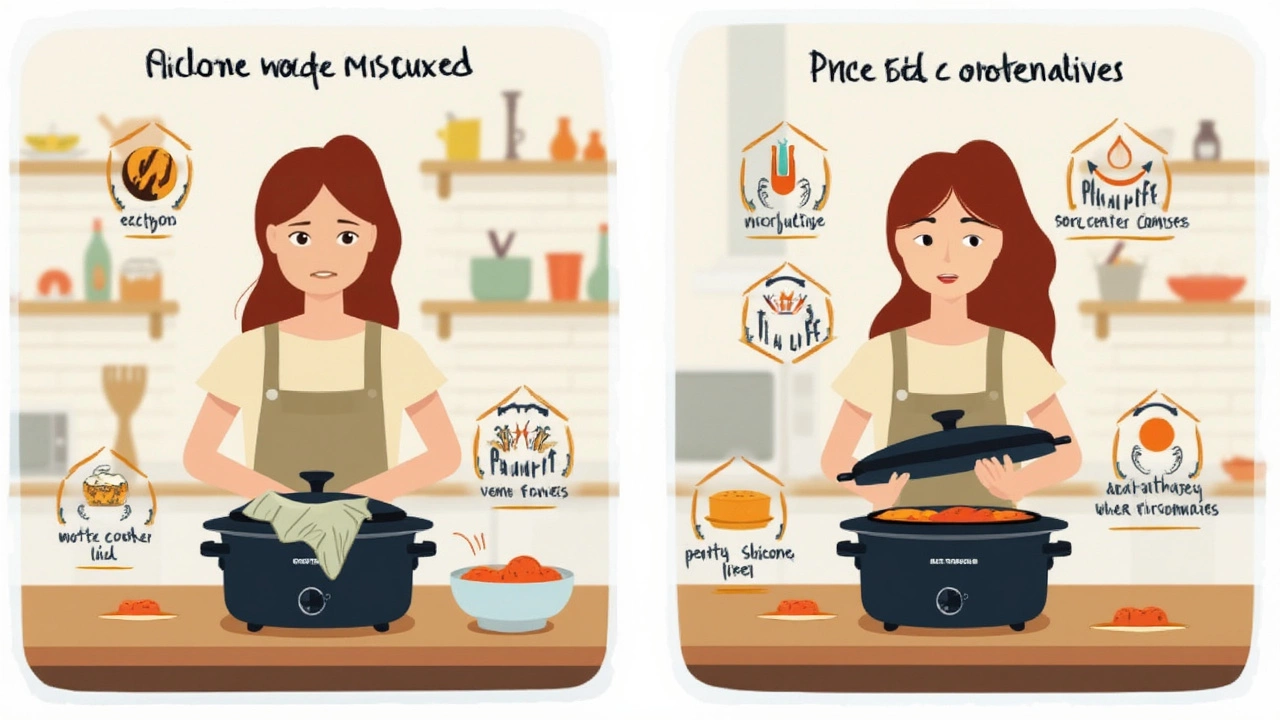
Practical Slow Cooker Tips
Getting the best out of your slow cooker doesn’t have to mean taking risks. Here’s what actually works when you want less condensation—and better results—without reaching for a tea towel under the lid.
- Crack the lid: If your recipe is almost done and still looking watery, just prop the lid open with a wooden spoon for the last 30 minutes. Steam will escape, and your sauce thickens naturally.
- Use cornstarch or flour: Stir in a tablespoon of cornstarch (mixed with water) during the last hour for thicker, less soupy results. It’s a classic cook’s fix and totally safe in slow cookers.
- Switch up your lid: Some slow cooker brands now offer vented glass lids that let extra moisture out. If you’re often making bread, cakes, or anything topped with dough, looking into a vented lid is just smart planning.
- Keep that lid in place: Most slow cooker recipes count on a sealed environment. Every time you lift the lid, you add at least 20 extra minutes to the cooking time. Only lift when you’re absolutely checking for doneness or adjusting texture at the end.
- Don’t overfill: Filling more than two-thirds of the pot crowds the food, raises the water content, and prevents even cooking. Stick to about half to two-thirds full for the best results and less sogginess.
For a quick look at how much time you add if you peek under the slow cooker lid, check this out:
| Number of Lid Lifts | Extra Minutes Added |
|---|---|
| 1 | 20 |
| 2 | 40 |
| 3 or more | 60+ |
Steam and moisture control are just about how you use your gear. Skip the towel hack and stick with tried-and-true strategies to keep your meals safe and tasty. And if you’re new to slow cooking, try jotting down what works best—your future self (and maybe your spouse, if they’re anything like Phoebe and get picky about dinner texture) will thank you.

